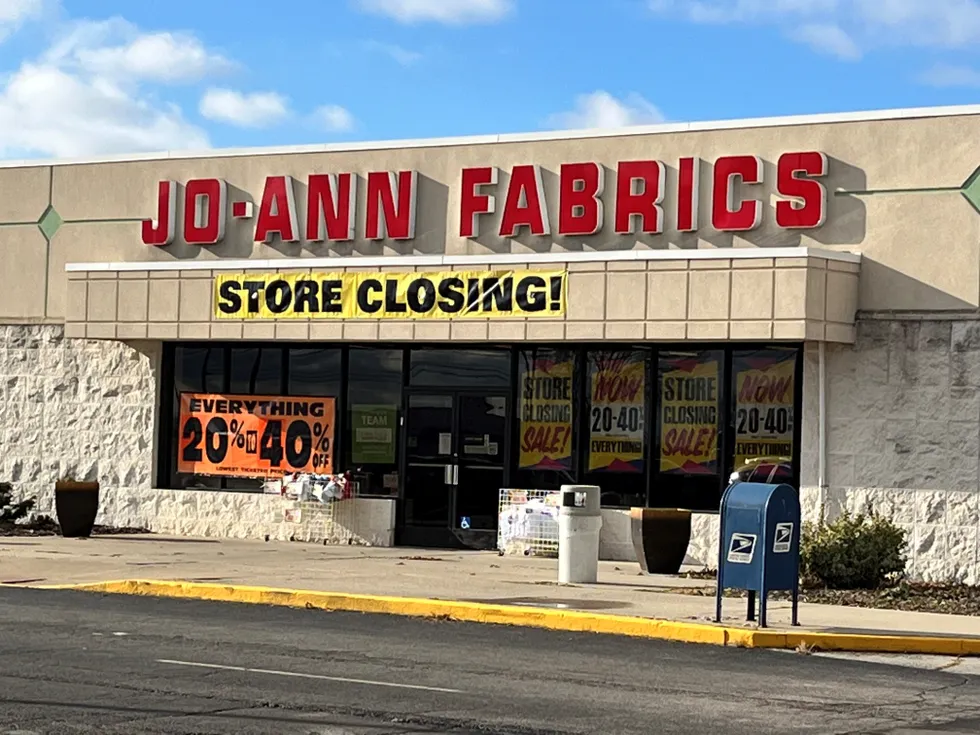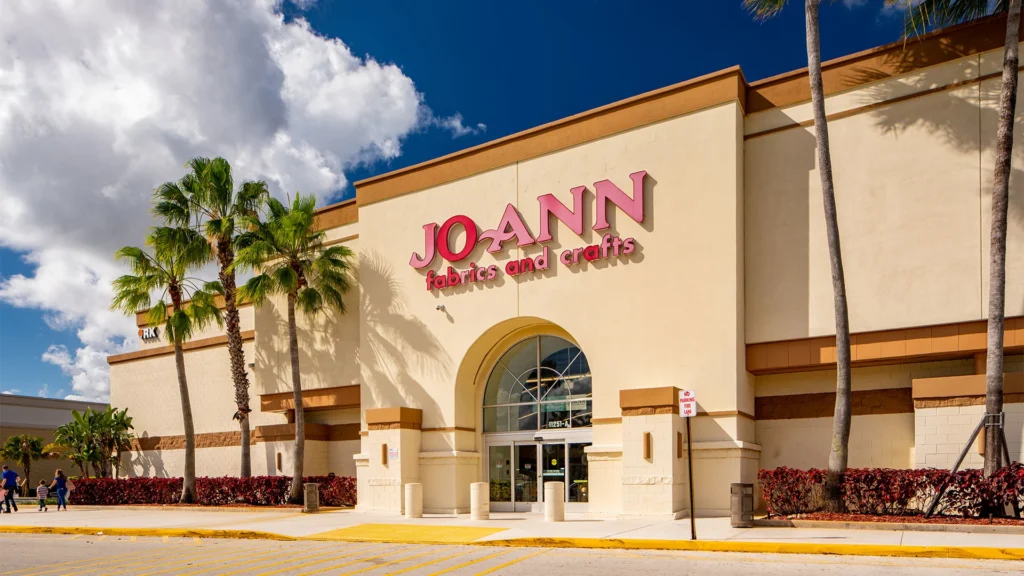
In a stunning turn of events, the iconic Joann Stores closing 500 fabric and craft outlets across 49 states. This decision marks a significant shift in the retail landscape for craft enthusiasts and small business communities across the United States. In this article, we explore the reasons behind the closures, the rich history of Joann, and what these changes mean for both consumers and local economies.
The End of an Era
For decades, Joann has been a beloved destination for DIY enthusiasts, sewing aficionados, and creative hobbyists. The announcement of the closures has sent shockwaves through communities that have relied on the in-store experience for inspiration, learning, and community engagement. With the headline “Joann closing 500 fabric and craft stores” many are left wondering how this shift will reshape the world of crafting.
Why Are the Joann Stores Closing?
Digital Transformation and Market Shifts
The retail world is rapidly evolving. With the convenience of online shopping growing year by year, many brick-and-mortar stores have found it increasingly challenging to compete. The rise of e-commerce, which offers competitive pricing and hassle-free delivery, has drastically changed consumer shopping habits. As shoppers increasingly turn to digital platforms, the Joann Stores closing is a stark reflection of the broader trend affecting traditional retail.
Economic Pressures
Maintaining a vast network of physical locations is expensive. Rising costs, from rent to utilities, along with fluctuating consumer spending habits, have placed immense pressure on established retailers. For Joann, the financial burden has ultimately led to the difficult decision to cut down on physical stores in favor of a more streamlined operation.
Changing Consumer Behavior
Today’s consumers crave personalized, immediate shopping experiences. While many still cherish the tactile joy of selecting fabrics in person, a growing number prefer the ease of online shopping, where products are just a click away. This shift has contributed significantly to the closures, as customers move away from traditional in-store experiences.
A Glimpse into Joann’s Rich History
Joann’s journey began as a small fabric store in the mid-20th century. Over time, it evolved into one of the largest craft retailers in America, a trusted resource for DIY projects, home décor ideas, and seasonal crafts. The store wasn’t just a shopping destination—it was a community hub where workshops, free classes, and crafting events nurtured creativity and skill.
Despite its deep roots and loyal customer base, the rapid changes in retail dynamics and the digital revolution have challenged even the most established names. This historical backdrop makes the current closures particularly poignant for a community that has long seen Joann as a cornerstone of creative expression.

Impact on Local Communities and the Crafting Landscape
Economic and Employment Concerns
The closure of these 500 stores isn’t just a blow to the retail sector—it has significant implications for local economies. Joann has been a major employer in many communities, offering jobs to thousands. The loss of these positions will undoubtedly affect local economies, putting a strain on communities that have relied on the stores for employment and economic stability.
Changing the Crafting Experience
Joann’s in-store events, workshops, and community classes have long been a source of inspiration and skill-building for craft enthusiasts. The closures raise concerns about the future of these community-centered experiences. As physical spaces diminish, there is a fear that the rich, interactive crafting culture might suffer.
New Opportunities on the Horizon
Every change brings new opportunities. With the physical stores closing, there is a significant chance for the rise of digital platforms dedicated to crafting. Online classes, interactive shopping experiences, and virtual communities could not only replace but also enhance the traditional retail experience. Additionally, local artisans and independent craft stores may seize this opportunity to fill the void, offering personalized services and unique products that large chains cannot.
The Future of Crafting: Adapting to Change
Embracing the Digital Marketplace
With the Joann Stores closing, many customers are expected to turn to online retailers for their craft needs. This shift offers numerous benefits, such as a broader range of products, better pricing, and the convenience of shopping from home. However, it also means adapting to new challenges like ensuring product quality and managing delivery logistics.
Supporting Local Artisans
The closure of a major player like Joann might be a call to action for local craft stores and independent artisans. These smaller businesses have the flexibility to provide personalized, niche services that can help maintain the creative spirit in communities. Supporting local artisans not only boosts local economies but also enriches the crafting culture with unique, handcrafted goods.
Experiential Retail: A New Trend
As the traditional retail model evolves, the concept of “experiential retail” is gaining traction. This approach blends the ease of online shopping with the tangible benefits of in-store experiences through interactive displays, workshops, and live demonstrations. Retailers who adopt this model could create engaging, hybrid experiences that attract a diverse audience, ensuring that the essence of creativity remains alive even without widespread physical store presence.

Interesting Facts About Joann and the Crafting Industry
- Historical Milestone: Joann started as a small fabric store in the mid-20th century and grew to become one of America’s largest craft retailers.
- Community Impact: Many Joann locations hosted free crafting classes and events, turning stores into community hubs for creativity and learning.
- Digital Surge: Recent years have seen an 80% increase in online craft sales, underscoring the rapid digital shift in the industry.
- Creative Innovation: Despite the closures, online platforms like Pinterest and Instagram continue to thrive as spaces for sharing tutorials, project ideas, and inspiration.
Below is a sample table with city-wise details of select Joann store closures. Please note that the actual list and locations may vary, and this table is for illustration purposes only:
| State | City | Store Address | Closure Date |
|---|---|---|---|
| California | Los Angeles | 123 Craft St., Los Angeles, CA 90001 | March 31, 2025 |
| California | San Diego | 456 Fabric Ave., San Diego, CA 92101 | April 15, 2025 |
| Texas | Dallas | 789 Needle Ln., Dallas, TX 75201 | April 20, 2025 |
| Texas | Houston | 101 Yarn Blvd., Houston, TX 77001 | April 20, 2025 |
| New York | New York City | 202 DIY Dr., New York, NY 10001 | May 1, 2025 |
| Florida | Miami | 303 Thread Rd., Miami, FL 33101 | May 5, 2025 |
| Illinois | Chicago | 404 Sewing St., Chicago, IL 60601 | May 10, 2025 |
| Georgia | Atlanta | 505 Craft Ave., Atlanta, GA 30301 | May 15, 2025 |
| Pennsylvania | Philadelphia | 606 Fabric Blvd., Philadelphia, PA 19101 | May 20, 2025 |
| Ohio | Columbus | 707 DIY Dr., Columbus, OH 43215 | May 25, 2025 |
Conclusion: A Moment of Transition
The news of the Joann Stores closing marks a pivotal moment for the retail and crafting industries. While the decision has undoubtedly left many loyal customers and local communities mourning the end of an era, it also opens up exciting new possibilities. The digital transformation of the retail landscape could lead to innovative ways to experience and enjoy crafting, from online classes to immersive virtual shopping experiences.
For those who have cherished the in-person interactions and community feel of Joann, this is a time to embrace change and explore new avenues for creativity. The spirit of innovation and artistic expression that Joann fostered will continue to thrive, even as the physical stores close their doors.
FAQs
Q1: Why are Joann Stores closing 500 locations?
A: The closures are primarily due to the shift towards online shopping, rising operational costs, and changing consumer behaviors that favor digital over physical retail experiences.
Q2: What does this mean for loyal Joann customers?
A: Loyal customers might transition to online shopping for their crafting supplies. While the traditional in-store experience will be missed, new digital and local alternatives may emerge to fill the gap.
Q3: How will these closures affect local employment?
A: Many Joann Stores have been major employers in their communities. The closures are expected to result in significant job losses, impacting local economies across the 49 states.
Q4: Are there opportunities for local artisans with these closures?
A: Yes, the void left by Joann could be an opportunity for local craft stores and independent artisans to offer personalized, niche products and services, thereby reinvigorating local crafting communities.
Q5: What alternatives do customers have for purchasing craft supplies?
A: Customers can turn to online retailers, explore local independent craft stores, or participate in the emerging trend of experiential retail, which combines online convenience with in-person experiences.
As the retail world transforms, the closure of Joann Stores symbolizes both an end and a beginning. While it marks the conclusion of a cherished chapter in the crafting community, it also paves the way for new, innovative ways to celebrate creativity. Embracing these changes, Americans can look forward to a future where the joy of crafting continues to flourish in fresh, exciting formats.
